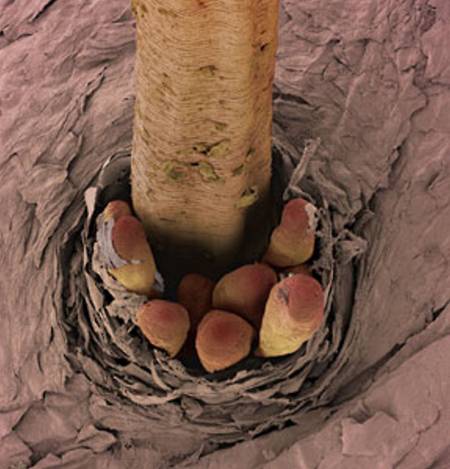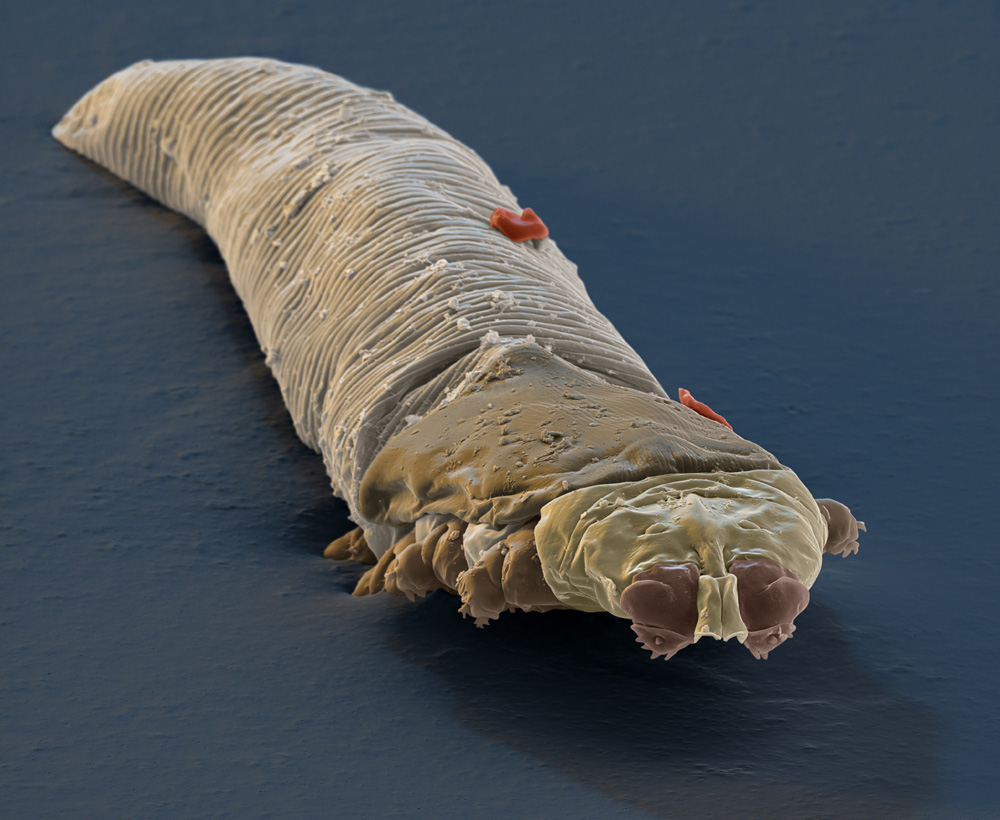
Demodex folliculorum
Living at base of hair follicle.
Wikipedia
***
"Natural History is the antidote for piety."
Gregory Bateson
***


Mites living on human faces may help to answer questions about human evolution.
The human body is its own ecosystem. It is home to a wide variety of microbes, fungi, viruses and tiny animals. According to prior research, 90 percent of the cells that make up the average human belong to microbes that are not part of the human in question.
Now, a new study from researchers at North Carolina State, the North Carolina Museum of Natural Sciences, and the California Academy of Sciences has taken a close look at two species of mites that live on the human face.
It has, previously, been difficult to determine how widespread these mites are because skin sampling will not necessarily turn up actual specimens of the mites. The new research, however, looked at DNA samples from human volunteers and found evidence of the mites on all of those sampled, regardless of their health or geographic location.
In “Ubiquity and Diversity of Human-Associated Demodex Mites,” published in PLOS ONE, the researchers examine the Demodex folliculorum and Demodex brevis. The two mite species are, interestingly, not related to one another. While it might be assumed that two similar creatures, living in the same habitat, might share a close common ancestor, these two mites appear to have entirely separate histories.
“Our analyses actually show that brevis is more closely related to dog mites than to folliculorum, the other human mite. This is interesting because it shows us that humans have acquired each of these mite species in different ways, and that there are two separate histories of how each of these mite species came to be on our face,” said Michelle Trautwein, adjunct assistant professor of entomology at NC State and Schlinger Chair of Dipterology at the California Academy of Sciences in a statement.
It does not appear that these animals, both of which have been with us for a very long time, actually cause any damage. Researchers hope, however, that they may provide information about how humans evolved and spread around the world after emerging from Africa.
“So far, our analyses look promising. When looking at the DNA from one of our mite species, D. brevis, we found that mites from China are genetically distinct from mites from the Americas. East Asians and European populations diverged over 40,000 years ago and so far it looks like their mites did as well,” said Trautwein.
As more DNA samples, from other parts of the world, are studied they should provide additional details about human populations, when they separated from one another and what other groups they may be related to.
For additional information on creatures that live in the zoo that is the human body, see the National Institutes of Health’s Human Microbiome Project.
No comments:
Post a Comment